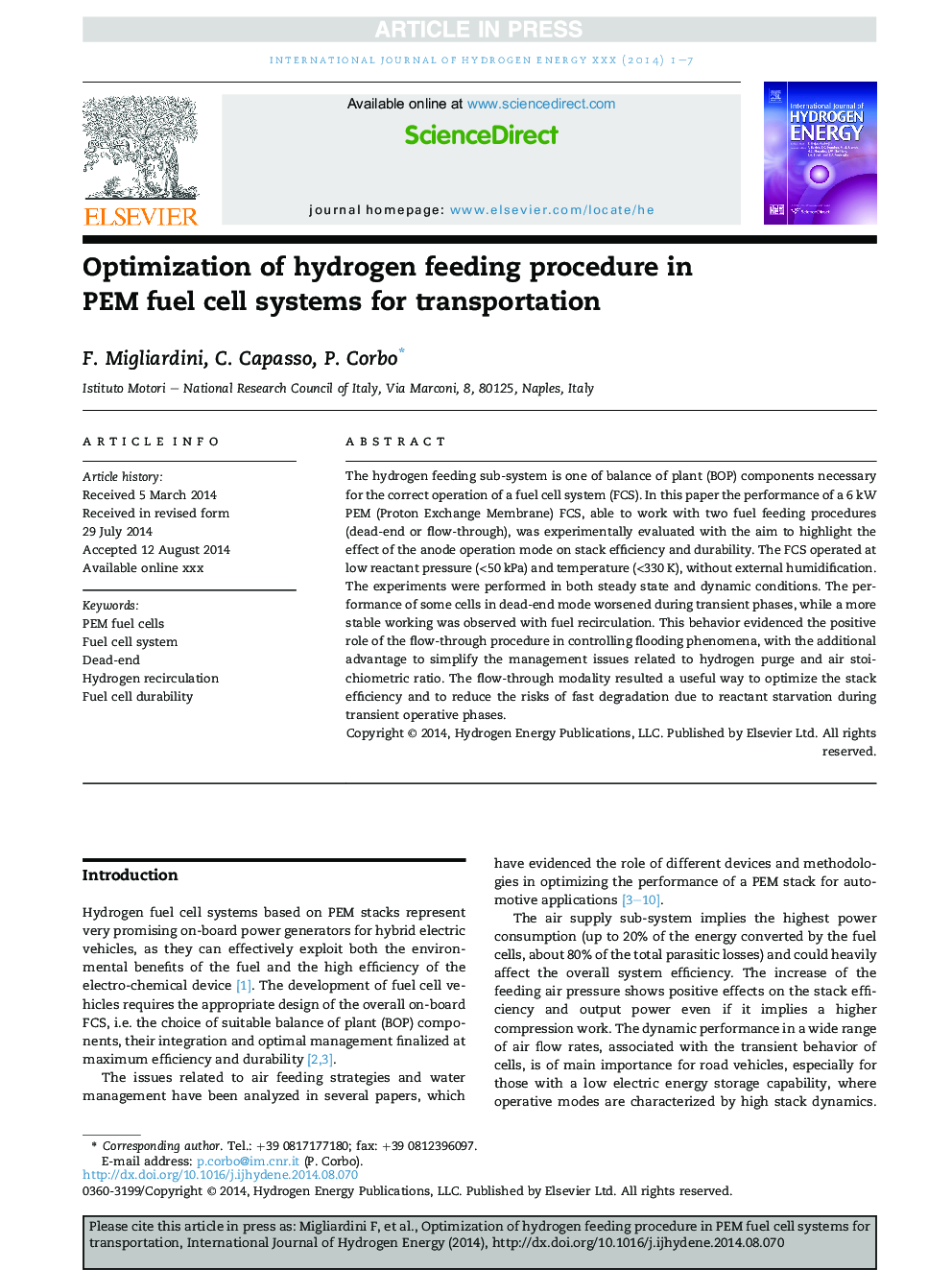| Article ID | Journal | Published Year | Pages | File Type |
|---|---|---|---|---|
| 7717434 | International Journal of Hydrogen Energy | 2014 | 7 Pages |
Abstract
The hydrogen feeding sub-system is one of balance of plant (BOP) components necessary for the correct operation of a fuel cell system (FCS). In this paper the performance of a 6Â kW PEM (Proton Exchange Membrane) FCS, able to work with two fuel feeding procedures (dead-end or flow-through), was experimentally evaluated with the aim to highlight the effect of the anode operation mode on stack efficiency and durability. The FCS operated at low reactant pressure (<50Â kPa) and temperature (<330Â K), without external humidification. The experiments were performed in both steady state and dynamic conditions. The performance of some cells in dead-end mode worsened during transient phases, while a more stable working was observed with fuel recirculation. This behavior evidenced the positive role of the flow-through procedure in controlling flooding phenomena, with the additional advantage to simplify the management issues related to hydrogen purge and air stoichiometric ratio. The flow-through modality resulted a useful way to optimize the stack efficiency and to reduce the risks of fast degradation due to reactant starvation during transient operative phases.
Related Topics
Physical Sciences and Engineering
Chemistry
Electrochemistry
Authors
F. Migliardini, C. Capasso, P. Corbo,
